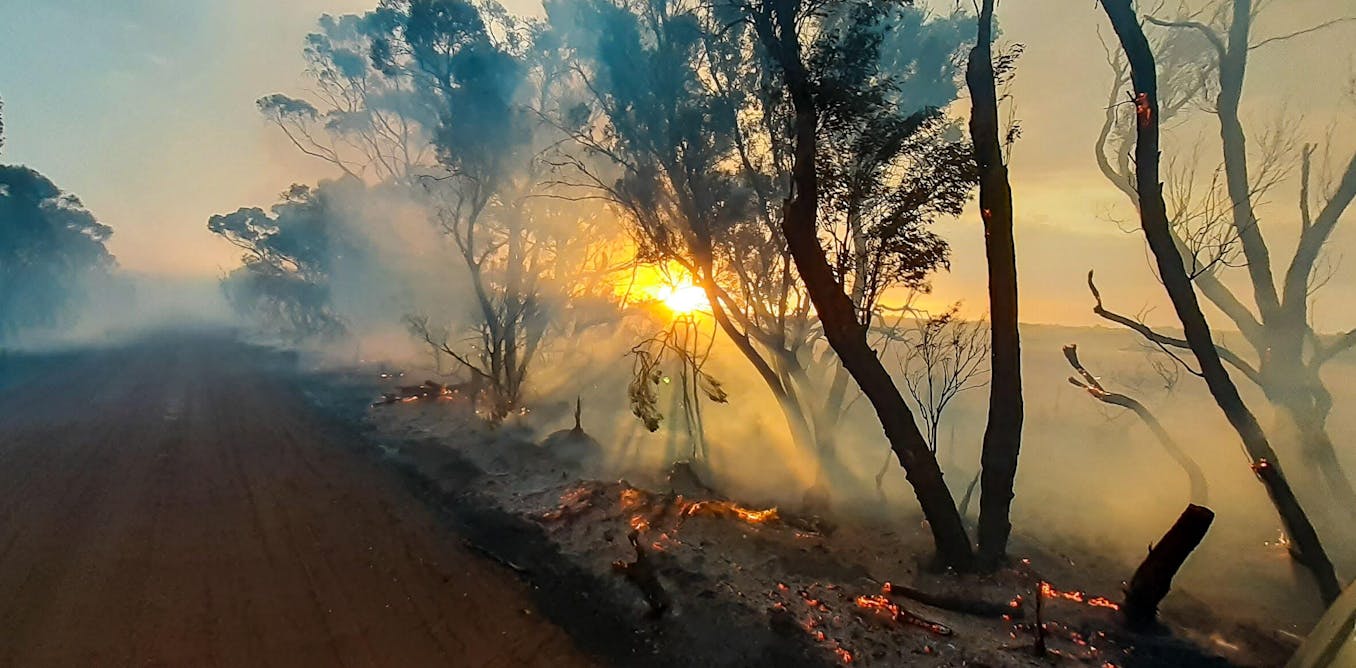Crafting Your Home's Security: A Detailed Bushfire Management Plan Overview
Crafting Your Home's Security: A Detailed Bushfire Management Plan Overview
Blog Article
Important Tips for Bushfire Administration to Make Sure Fire Defense

Recognizing Bushfire Threat Levels
Comprehending the varying levels of bushfire threat is important for effective preparation and prep work in mitigating prospective risks to lives and homes. Bushfire danger levels are generally classified based on factors such as climate condition, fuel availability, topography, and historic fire behavior. By understanding these threat neighborhoods, individuals and degrees can proactively carry out strategies to minimize vulnerability and boost strength when faced with potential bushfire occasions.
The first degree of bushfire danger is low threat, where the probability of a bushfire taking place and causing substantial harm is very little. High-risk levels symbolize a substantial threat, with conditions conducive to quick fire spread and severe fire actions.
Comprehending these bushfire threat degrees enables stakeholders to tailor their preparedness and feedback actions appropriately, making certain a reliable and aggressive technique to bushfire management.
Creating a Defensible Room
Effective bushfire monitoring begins with establishing a defensible area around properties to boost defense against potential fire hazards. A defensible area is a barrier area that creates a barrier in between a framework and the surrounding flammable plant life. This area functions as a critical line of protection, providing firefighters a secure location to operate and aiding to lower the risk of a fire infecting the property.
When establishing a defensible space, it is important to consider the format of the building and the bordering landscape. Clearing up vegetation, especially highly combustible plants, within a particular span of the home can help prevent the rapid spread of fires. Furthermore, preserving a well-irrigated area around the residential property can further boost its defensibility.
Normal maintenance of the defensible area is important to guarantee its performance. This includes cutting looming branches, getting rid of dead plants, and maintaining the area devoid of debris. By spending effort and time into developing and maintaining a defensible room, residential property proprietors can considerably improve their chances of safeguarding their homes and properties throughout a bushfire.
Applying Fire-Resistant Landscaping
When designing landscapes to reduce the risk of bushfires, including fireproof aspects is vital for enhancing building protection and minimizing fire dangers. Applying fireproof landscaping entails calculated planning to create a defensible area around frameworks. Beginning by selecting fireproof plant types that are less most likely to stir up and create lower degrees of flammable products. Select plants with high moisture material, reduced oil material, and minimal dead plant life to minimize the threat of fire spread. In addition, preserve ample spacing in between plants and keep them properly pruned to avoid fire from quickly jumping between vegetation.

Developing an Emergency Situation Evacuation Strategy
Developing a comprehensive emergency situation evacuation strategy is crucial for making sure the security and wellness of individuals during potential bushfire occurrences (Bushfire Management Plan). A reliable evacuation plan should outline clear treatments to follow in case of a bushfire threat, including marked evacuation routes, assembly factors, and communication methods
To start developing an emergency emptying strategy, it is important to assess the specific threats and vulnerabilities of your place. Determine several evacuation paths that cause secure locations far from the fire, taking into consideration variables such as surface, road availability, and prospective hazards. Establish communication networks to alert residents of an approaching evacuation, using approaches such as alarms, message informs, or door-to-door notifications.
Regularly testimonial and exercise the discharge strategy with all locals or neighborhood participants to ensure every person comprehends their obligations and duties. Conduct drills to evaluate the performance of the Learn More Here plan and make any kind of necessary adjustments. By having a well-prepared discharge plan visit here in area, you can enhance the chances of a orderly and secure emptying during a bushfire emergency situation.
Preserving Fire Safety And Security Tools
After establishing a comprehensive emergency evacuation strategy for bushfire occurrences, it is crucial to prioritize the normal upkeep of fire security equipment to make sure ideal capability and readiness. Regular maintenance of fire safety and security devices such as fire extinguishers, smoke detectors, emergency alarm, and automatic sprinkler is important in protecting lives and building throughout a bushfire. When required., performing regular assessments, testing, and servicing of these gadgets by certified professionals is essential to assure they are in functioning order.
Fire extinguishers ought to be examined on a regular basis for pressure degrees, noticeable damages, and proper functionality. By diligently keeping fire security equipment, people can boost their preparedness and feedback abilities in the occasion of a bushfire.
Verdict
In final thought, reliable bushfire management includes comprehending danger levels, developing defensible rooms, applying fireproof landscaping, developing evacuation strategies, and preserving fire security equipment. By following these essential pointers, people can guarantee much better fire security and security for their areas and properties. It is essential to focus on aggressive measures to minimize the risks connected with bushfires and to be gotten ready for emergencies.
By recognizing the nuances of bushfire threat levels, developing defensible spaces, applying fireproof landscaping, creating detailed evacuation strategies, and guaranteeing the upkeep of fire security tools, neighborhoods and individuals can dramatically strengthen their durability against the ravages of wildfires - Bushfire Management Plan. These pointers are not only vital for safeguarding against instant fire risks yet additionally for fostering long-lasting fire security methods that can make a significant distinction in the face of intensifying bushfire dangers
Risky degrees represent a considerable risk, with problems helpful to quick fire spread and extreme fire habits. Normal visite site maintenance of fire safety and security tools such as fire extinguishers, smoke detectors, fire alarm systems, and sprinkler systems is crucial in securing lives and property throughout a bushfire.In conclusion, effective bushfire management includes comprehending threat degrees, developing defensible rooms, implementing fire-resistant landscaping, developing evacuation strategies, and keeping fire safety and security tools.
Report this page